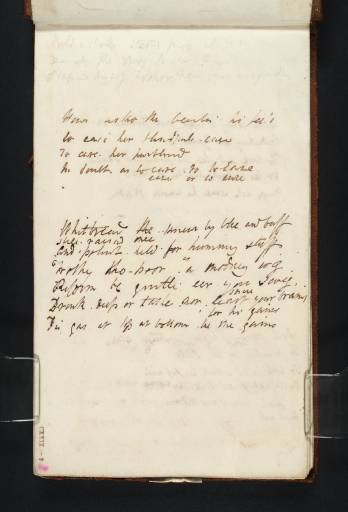References
How to cite
David Hill, ‘Stanzas Referring to Jonathan Wathen Phipps, Baroness Howe and Samuel Whitbread (Inscription by Turner) c.1812–13 by Joseph Mallord William Turner’, catalogue entry, October 2008, in David Blayney Brown (ed.), J.M.W. Turner: Sketchbooks, Drawings and Watercolours, Tate Research Publication, September 2014, https://www

